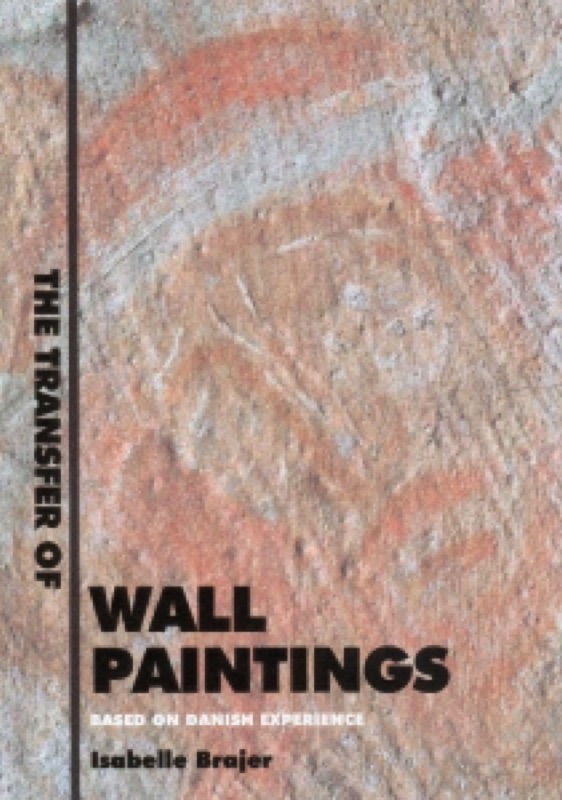The heyday of detaching and transferring wallpaintings is over, a result of shifting values in conservation and the development of solutions for in situ treatment. Transfers were carried out in the past for a number of reasons - some of which may seem frivolous or unethical today. The frequency with which transferring was resorted to reflects the prevailing attitudes and limited treatment methods at that time.
The transfer of a wall painting is a difficult and risky operation that affects both the material characteristics and the incorporeal qualities of the painting. Numerous examples of the negative effects of this procedure have accumulated in many countries over the centuries and today we are left with a vast collection of misplaced, often homeless, paintings, many of which are in dire need of treatment.
This volume presents a detailed study of the transferred wall paintings in Denmark. However, the material and case studies presented contain information of interest to all conservators and others working with wall paintings. While setting the historical development and theoretical aspects in context, the author also addresses in detail the various techniques and materials used in the course of the operations. In addition, the consequences of this drastic treatment are presented and illustrated by examples of damage. Recommendations for future treatments are discussed and the text is supplemented with a survey of wall painting transfers in Denmark, which will be sent to you electronically after purchase.
Acknowledgements
Introduction
The transfer of wall paintings as a treatment method
Theoretical considerations and consequences
Physical and chemical alterations
Non-physical alterations
The generation of collectors' items
Exhibitions and homeless transfers
Permanent museum collections
Attitudes to the transfer of wall paintings
Wall painting transfer techniques
Phase 1 - Preparation
The principle of using glues of varying solubility parameters
Preparation of the surface
The facing
Counter-moulds
Phase 2 - Detachment
Detachment by the stacco a massello method
Detachment by the stacco method
Detachment by the strappo method
Phase 3 - Post-detachment
Treatment of the back of the detached painting
The intervention layer
Mounting on movable supports
Removal of the facing
Installation and exposition of transfers on movable supports
Mounting detached paintings in situ
The development of transfer techniques in Denmark
Murals removed from the wall by sawing
Execution of the first strappo in Denmark
Transfer of the paintings from Lund Cathedral
The dissemination of Risebye's technique through his students
Transfers executed by Risebye between 1942 and 1944
The transfer of Sonne's frieze in 1951-58
The transfer of the frescoes in the Central Library in Hjørring
The redevelopment project in Copenhagen
The relocation of Steffanoni's transfer to Klaksvig
Transfers executed by Egmont Lind
Modern transfer techniques
Transfer statistics
Overview
Reasons for the transfer of wall paintings in Denmark
Transferred originals replaced by in situ replicas
Major structural repair, or demolition of the building
Poor condition of the painting
Salt damage
Poor adhesion of plaster
Severe fragmentation
Damage resulting from previous treatments
Detachment to reveal an underlying painting
Detachment due to inconvenient locations
Overview
Methods and materials used for transferring wall paintings in Denmark
Surface treatment prior to application of facing
Impregnation
Cleaning
Facing adhesives
Facing carriers
Detachment by the strappo method
Detachment by the stacco method
Detachment by the stacco a massello method
Size of the detached fragments
Treatment of the back
Problems with deformation after detachment
Impregnation of the back
Backing
Lining
Intervention layers
Movable supports
Exhibition of movable supports
Artificial boundaries of transfers
Mounting of movable transfers in situ
In-situ mounting of non-movable transfers
Impregnation of the paint layer after completion of the transfer
Overview
The condition of the transferred wall paintings in Denmark
The condition survey
Types of damage noted
Loss of paint layer
Alteration of the surface configurations
False texture imprints in the paint layer
Residual facing adhesive
Micro-organic growth
Tone alterations and discoloration
Superficial cracks
Salt efflorescence
Deformation of canvas supports
Poorly constructed honeycomb supports
Overview
Focus areas for future projects
Removal of hygroscopic facing adhesives
Effective intervention layers
3-D digitising and stereolithography for the construction of supports
Further treatment of transferred wall paintings
Treatment of transfers mounted on canvas with oil caseinate
Treatment of transfers mounted in situ with oil caseinate
Residual facing adhesive
The separation of the painting from the support
Restoration of lost optical properties
Restoration of lost surface configuration
Conclusion
Appendix
Painting techniques of the transferred decorations in Denmark
Historical background for wall paintings in Denmark
Medieval wall paintings
Frescoes
Glossary
Bibliography
Unpublished reports and theses
Index
